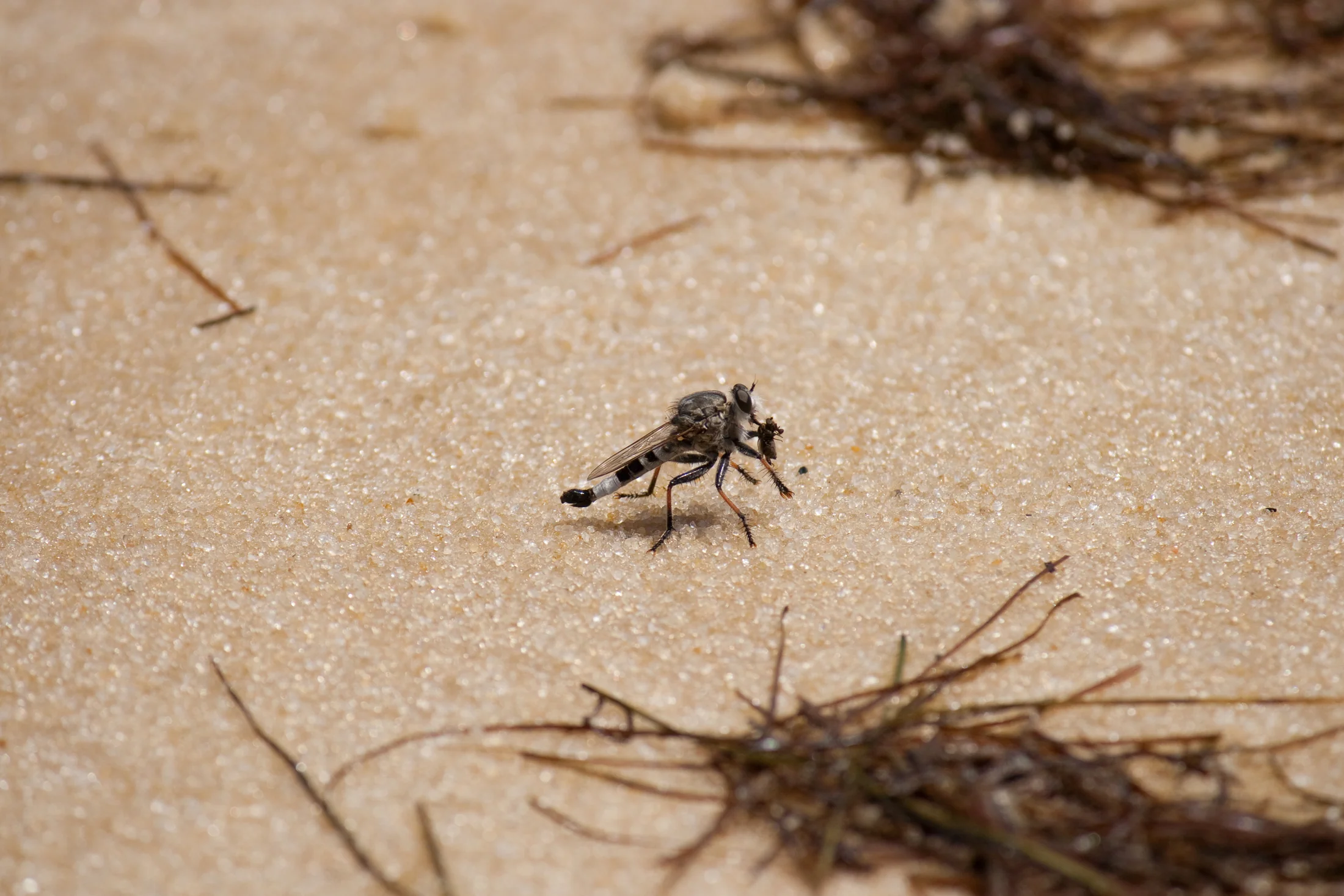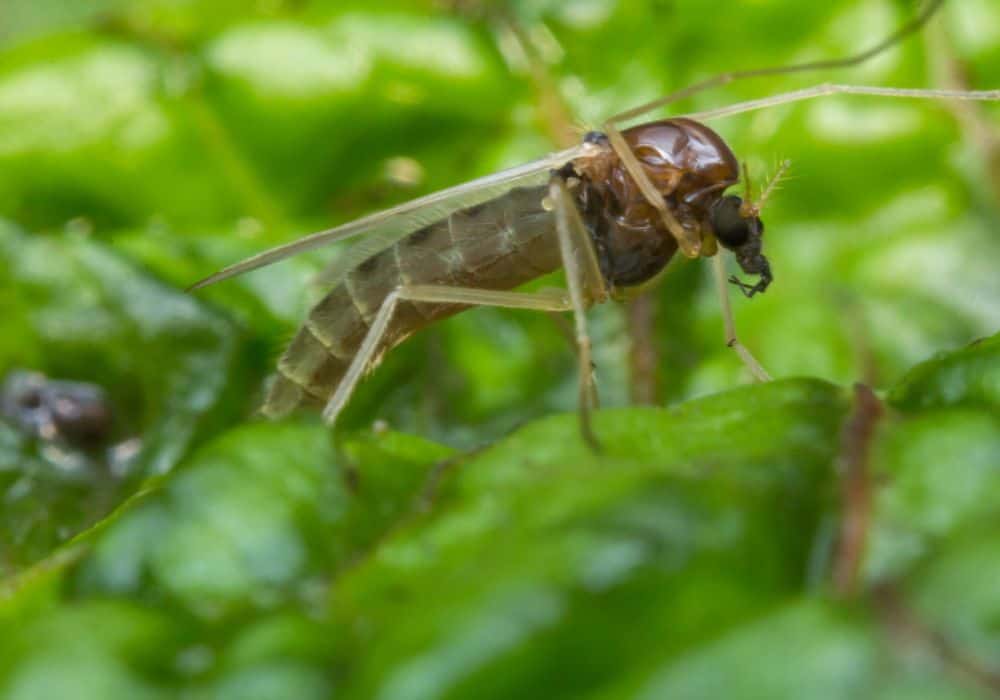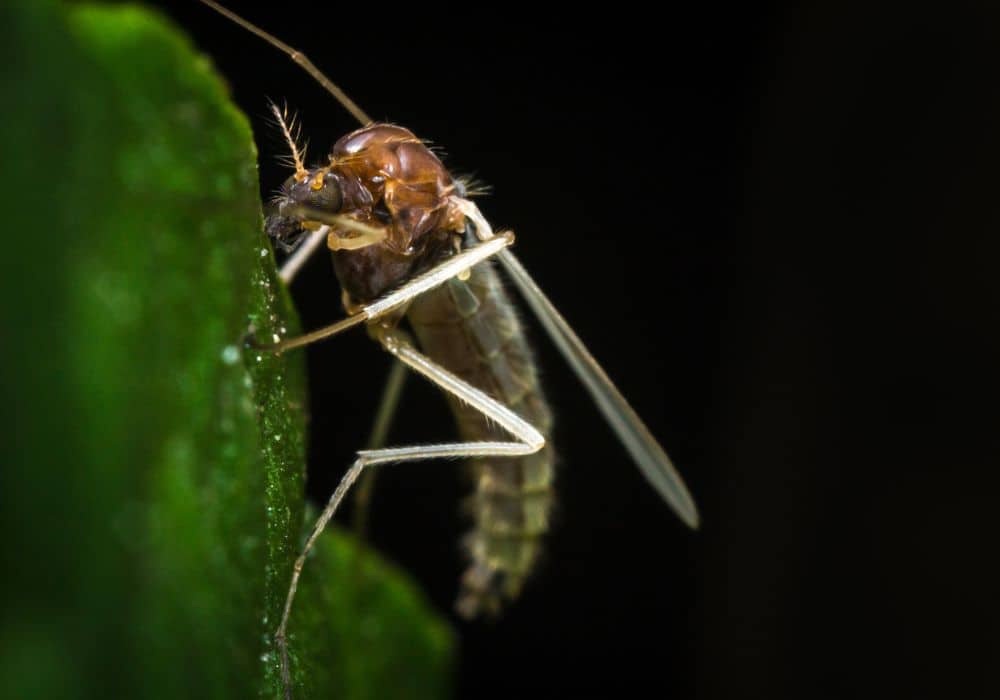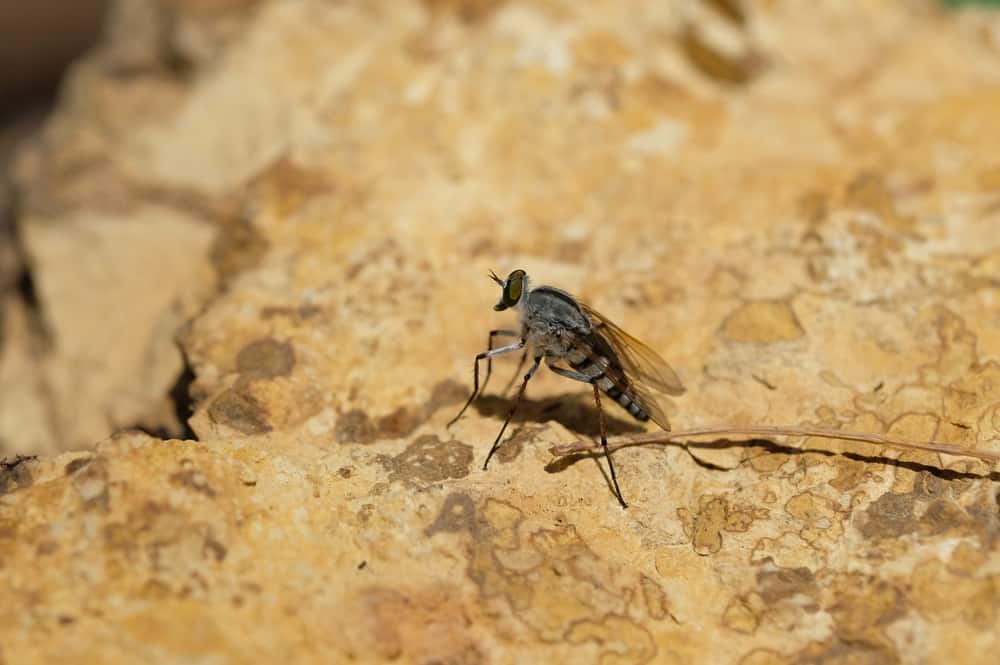Sand gnats or sand flies are among the most annoying types of flying pests in many parts of the world. These flies, as well as other similar types of gnats, are also often called no-see-ums, biting midges, punkies, granny nippers, and more funky-sounding nicknames.
Despite how common these flies are, however, there are also quite a few misconceptions and myths about them and they are often confused with other types of pests such as sand fleas and mosquitoes. So, below we’ll try to dispel some of these myths and give you ample info on how to get rid of sand gnats and what makes these flies so nasty.
What are Sand Gnats Exactly?
These small flying insects are members of the Psychodidae family of drain flies, fitter flies, sink flies, sewer flies, and others. It’s the family of the so-called “true flies”. So, even though sand gnats can look like little mosquitoes with their elongated and thin bodies, a single set of wings, and long antenna, these tiny insects are actually flies.
This doesn’t make their bites any less nasty, however. So, during the heat of summer between June and August, people in warmer climates can very well expect to encounter entire clouds of these tiny mosquito-like flies.
What’s more, as their name suggests, sand flies like to nest, breed, and hunt in and around sandy areas such as beaches, tidal flats, and coastal lagoons that are just wet enough to support their life cycle and the laying of eggs and hatching or larva.
These pests are most active during dawn and dusk but can be encountered later in the day or night, depending on the weather. Usually, however, adult sand flies will rest in cracks or fissures on tree trunks or your house’s ceiling during the mid-day and midnight hours.
And, yes, sand gnats bite, just like many other flies and flying pests. Fortunately, because of their small size, their bites aren’t as painful or itchy as they could have been. Unfortunately, because these flies roam around in swarms, you rarely get bit by just one.
As is the case with many other flying and biting insects, it’s the female of the species that bites. Male sand gnats thrive on flower and fruit nectar and are harmless to people. The females are also attracted to nectar – and therefore to fruity scents – but they need to also feed on blood to get enough protein for the egg laying process.
Now that we’ve covered the basics, let’s go over some of the key differences between sand gnats and other pests that often get people confused.

Credit: naturalpatch.com
Sand gnats vs fungus gnats
When looking into how to get rid of sand gnats, it’s important to make sure you’re looking for solutions for the right insect as these aren’t the only common type of gnat. Many others can also look the same and even get nicknamed no-see-ums, biting midges, or punkies.
Fungus gnats are the prime example here. Adult fungus gnats look and behave very much like adult sand gnats – they are active during the summer, the females bite, they are attracted to fruity scents, and they fly in swarms. What’s more, they also tend to get repelled by the same things as sand gnats – more on that below.
With all these similarities, why is it important to know the differences between these two species? Because, as their names imply, they nest in different areas. While sand gnats prefer the not-so-moist environment of sand, fungus gnats choose to lay their eggs in areas that are as wet as possible because that’s where the fungus gnat larvae thrive.
This is important when we’re trying to pinpoint the origin point of the fungus gnat infestation in or near our property. That’s why it’s often said to just “follow the fungi” when looking for the breeding grounds of fungus gnats. This will usually lead you to places such as rivers, ponds, and creeks, as well as smaller areas such as birdbaths, leaky pipes, puddles, overwatered potted houseplants and veggie gardens, and more.
So, figuring out whether you’re dealing with sand gnats or fungus gnats is helpful to find the source of the problem on or around your property.
Sand gnats vs mosquitoes
It’s understandable to mistake sand gnats for small mosquitoes. That’s not what they are, of course, as the two belong to entirely different insect families. Thankfully, sand gnats don’t spread nearly as many and as bad diseases as mosquitoes – neither Zika Virus nor West Nile Virus are an issue with these insects, for example.
Sand gnats vs sand fleas
If you start browsing for more info on sand gnats, one of the most common misconceptions you’ll find in poorly-written articles is that sand gnats are the same as sand fleas.
This is NOT the case. While sand fleas are also tiny, also dwell near sandy areas, and also bite, they are not flies. What’s more – they are not fleas either and aren’t even insects at all. Instead, sand fleas are a type of terrestrial crustacean from the Talitridae family.
They are also much nastier than sand flies because they don’t just bite to suck blood out – the females of this species directly bury themselves in the mammal’s skin and lay their eggs there. Then, the female dies and falls off while the eggs fall off to hatch on the ground a little later.
This whole process is quite unpleasant physically and can lead to more health complications and diseases such as Tungiasis – much nastier than the consequences of a simple sand fly bite. Sand fleas are especially common in a lot of tropical areas around the world.
Are Sand Gnats Dangerous?

While sand gnats are not as dangerous as sand fleas or mosquitoes, they can spread certain diseases such as Leishmaniasis. So, trying to repel them or get rid of them is still a matter of more than just getting rid of a nuisance. Plus, their saliva can cause an unfortunate allergic reaction in many people.
Still, unless you know you have strong insect allergies, and/or you know you live in an area where Leishmaniasis is common (such as the tropics and subtropics), you usually don’t need to panic and run screaming at the sight of a few sand flies – just walk past the slow-flying swarm and prepare a sand fly repellent for next time.
How to Get Rid of Sand Gnats from Your Yard?
When talking about getting rid of sand gnats, we usually mean two things – getting rid of them from your property and getting rid of them when walking outside. So, let’s start with the former.
If you’ve started to notice an influx of no-see-ums of the sandy variety in your yard or property, that likely means they are nesting somewhere nearby. So, the first step is to look around for where they might be coming from.
Once you find the sandy area the little insects are flying out from every dusk and dawn, you can use a whole host of insecticides there, especially ones including D-Limonene and Linalool. Other good solutions include the classics such as Boric acid and Diatomaceous Earth.
When the flies are coming from an area outside your property and you just need to keep them away, there are a wide assortment of tools you can use such as scented candles, strong patio fans, any type of yellow sticky trap, bowls full of an apple cider vinegar mixture with a few drops of dish soap, mesh screens on your windows, bug zapper lamps.
Or, you can just plant things such as lemon thyme, lavender, Mexican marigold, or Geraniums around your property as those are natural fly repellents.
How to Get Rid of Sand Gnats from Your Vicinity When Going Out?

What if you’re out on a hike and you know there are lots of sand gnats in the area, however? Well, the first tip is to just wear long pants, long sleeves, and socks if the weather (and your heat tolerance) permit it. That’s usually not fun in the summer but even the thinnest of fabrics can work here as sand gnats can’t penetrate clothes quite as well as mosquitoes and larger flies do.
Alternatively, you can reach for most standard insect repellants as those work well against sand flies – from natural repellents using citronella, lemon, or eucalyptus to DEET and stronger insecticides.
In Conclusion
Sand flies aren’t the nastiest of the flying-and-biting summertime pests but they are not to be ignored either. They are slow fliers, don’t spread as many diseases, and are easy to repel but they can still be nasty when they swarm you and you don’t have any protection on you.
So, make sure there aren’t any near your property and always pack a repellent when going out.
